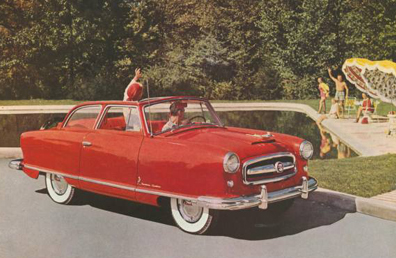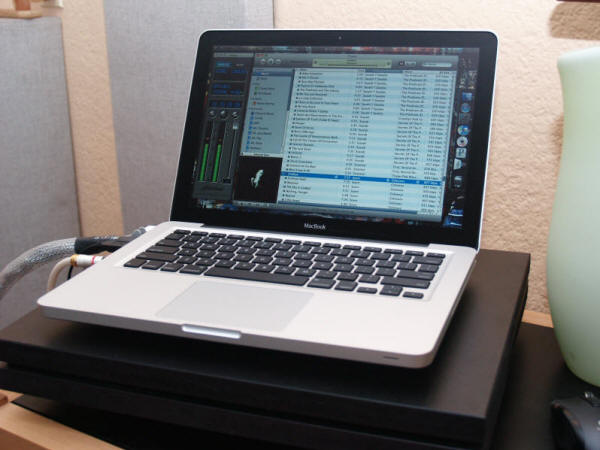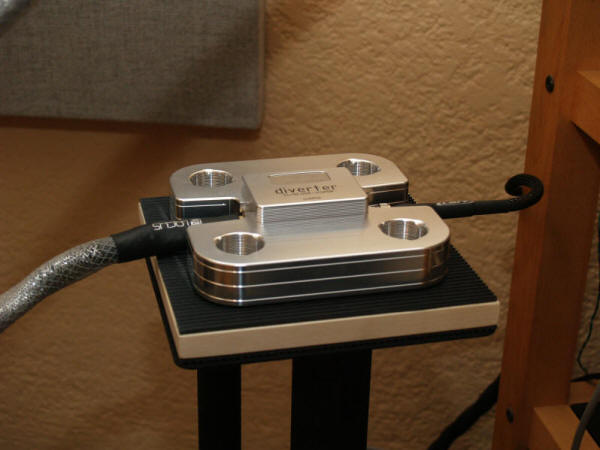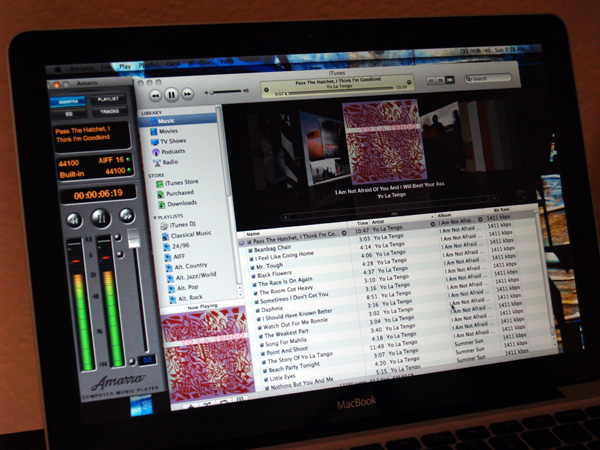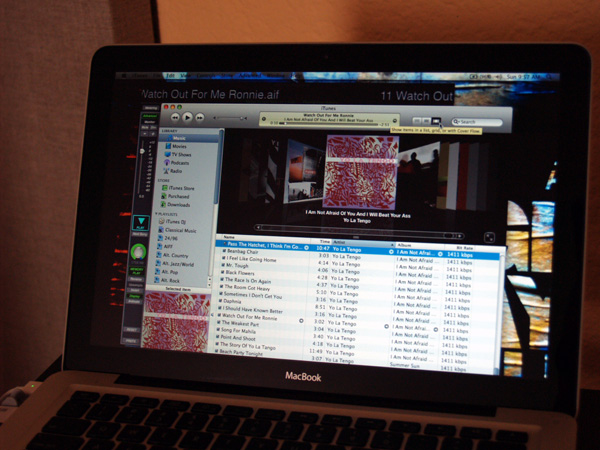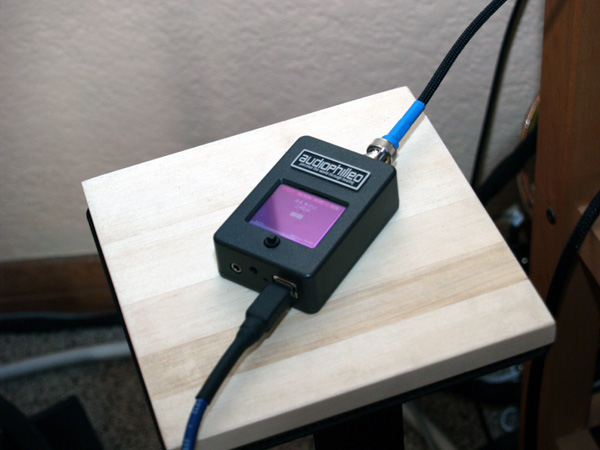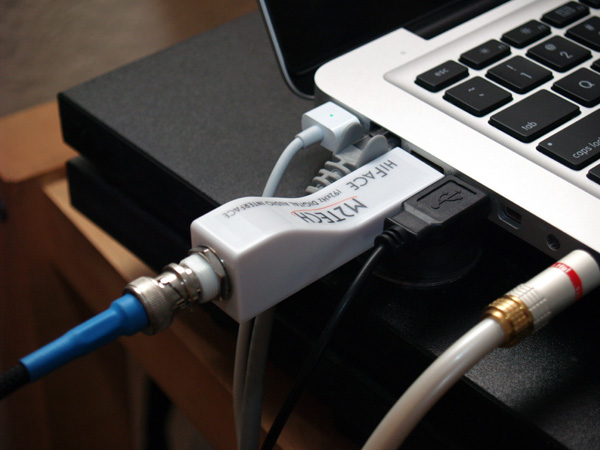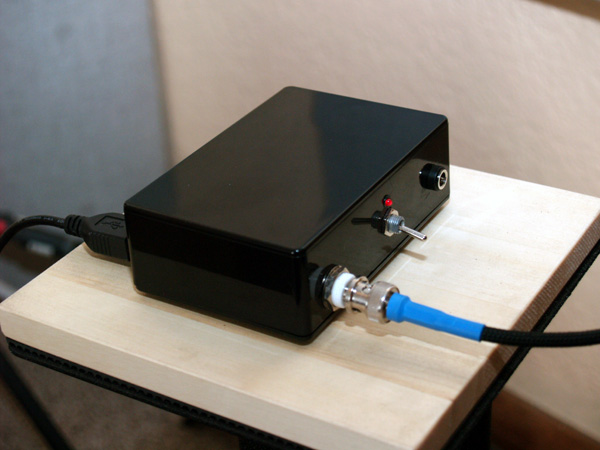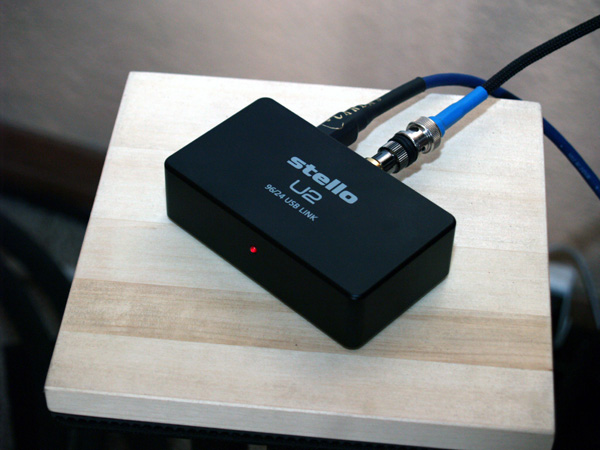|
You are reading the older HTML site
Positive Feedback ISSUE 51
Audio Ramblings - a
Plethora of USB Converters from Blue Circle,
Audiophilleo, Halide Designs, M2Tech, JKMods, Stello,
with a bit on Cardas and Black Cat
Getting your music from a computer to a DAC has never been easier than it is today. One has a plethora of USB to S/PDIF converters to choose from when wanting to connect a computer to a legacy DAC or even to augment the gaggle of DACs designed just for this purpose. That is any DAC that already features a USB connection that is perhaps not up to snuff in some way, or one that even fails to include such an interface—though why one would choose to offer such a product is rather questionable in today's market. I mean come on man… people are going this route either for convenience or practicality, so if you are going to build and market an outboard DAC then either get on the train or step aside for those of us who are moving down the 'audio' tracks. Now what is interesting is the diverse approach these USB to S/PDIF converter designers have chosen in making what they make. See… one can go with a device that precludes the use of any aftermarket USB or S/PDIF cable or for that matter, one that allows you to use an aftermarket USB and/or S/PDIF cable to your heart's content… one can choose a USB to S/PDIF converter that relies on USB power, battery, or an outboard power supply… one can choose a USB to S/PDIF converter that will do 16/44.1, 24/96, or even 24/192 if that is what you are after… one can choose asynchronous or isosynchronous in how the data is received… one can choose simple and small or big and complex… one can choose plain vanilla or elegant dark chocolate, well… you get the idea. You want it, it is out there and at prices that make it affordable to just about anyone. Naturally, one could just go with a decent affordable USB DAC like the basic HRT and call it quits, but hey man… we are the guys who sweat over the minutiae so making it simple is usually not our thang. So what I have here is a decent assortment of USB to S/PDIF converters from Blue Circle, Audiophilleo, Stello, M2Tech HiFace, the modified M2Tech HiFace, and the Halide Bridge along with my current in house reference… the Diverter from Sonic weld. Products from Wavelength, Firestone, Empirical Audio, Musiland, ART Legato, Bel Canto, Hagerman, Pop Pulse, and no doubt many others have either already been written about in PFO or never showed up after various inquires/promises on more than one occasion. No worries here as this was enough to make anyone go nuts… but I can add that the products from Empirical and Bel Canto are stellar and if you search the archives can find much written on either device. I will say upfront that if you are reading this in hopes of me saying which one is the best or which one you should or should not buy… well, read elsewhere. This is neither a shootout nor a technical treatise on their overall design and its implementation, nor is it an all out assault on what each one does and how. So even if I could, I will not be critiquing the claimed specifications or the parts and whatever… no this is more about what I heard… not why I heard it nor why I did not hear it—simply a reporting of what I experienced with the devices in the system…in my system with my choice of music. I will say that all worked as promised, all delivered the goods with no hiccups or issues. They all sounded good though obviously different which no doubt relates right back to their overall design. And in many cases differences were slight and rather irrelevant when one considers that it is all a matter of preference and synergy. In another system and with different preferences, wants, and/or needs… or whatever, one could easily (and no doubt would) get different impressions and results. No matter how trivial or not so trivial they might be. I guess what I am saying here is that any of these will work just fine in whatever system that they best fit into. That of course includes the listeners' wants and needs along with their music files and whatnot. In all cases I used the Cardas Clear USB cable ($150) combined with the Black Cat Veloce BNC digital cable ($129) as both are reasonably priced and seemed a logical option for the various devices—that is it makes sense to keep things consistent along with being affordable. I could have gone with Locus Designs' $2850 Cynosure USB cable combined with their $1000 Core digital cable, but that seemed a bit over the top for any of the converters in question here. Alright, yeah, I do use these two cables with the Diverter, but that is because I can as this is my system and my choice. Would anyone choose the same with the converters here in question? Perhaps, but not likely. As it stood either the Cardas or the Black Cat are killer cables at their respective prices (heck, they compete with products several times their price) so no one was the least embarrassed or handcuffed in any way. I also gave each converter a good 150-200 hours of time to settle in.
My computer is an Intel-based MacBook with 4GB of ram and a 32GB solid-state hard drive 'configured' only for music playback. The Mac is running the latest version of Snow Leopard as well as that of iTunes, Amarra, and Pure Music. The computer sits rests on three Isopods from Bright Star which sit upon a platform built to specifically mitigate EMI/RFI and extraneous vibrations. Additionally, a Pulse Gen ZX from Audio Magic sits directly to the rear of the Mac to also address EMI/RFI. All files are ripped via iTunes (error correction on) as AIFF files from an external Pioneer Professional DVD drive which is sitting on Vibrapods with a Shakti Stone resting atop. All music files are stored on a Drobo FS (3 WD 1TB Green Drives) that sits on Vibrapods with a Shakti Stone resting atop. The Drobo has its own dedicated filtered AC line and the Mac is run on battery power for 'critical' listening. The rest of my system can be found here.
Oh... and both Amarra and Pure Music work. Yeah, they are different here, but nothing major. Amarra is a tad richer and warmer... more tube-like where as Pure music is more revoltingly lighter... more solid-state like. Either is great, but here differences with iTunes is rather light. And it ain't the system or my ears that say so... everyone here will say pretty much the same... minimal differences and yeah, the system rocks. First up is the Audiophilleo1 ($895). This is sort of the new kid on the block and offers a lot for the money. You get ultra low jitter SPDIF output (<8ps RMS Period Jitter, <8ps RMS phase jitter 10Hz to u100Khz, <14ps RMS phase jitter 1Hz to 100Khz), asynchronous USB transfer, 'Fixed Frequency Clocks', 192Khz 24bit sample rate capable, regenerative power supply which isolates the S/PDIF output stage from USB power, fully differential ECL galvanically isolated transformer-less output stage, upgradeable firmware, USB powered, aluminum case, internal dithered digital volume control and phase reversal. Plus some features such as 'BitPerfect' testing, 'Virtual Cable' to fine tune system without BNC cable, 'JitterSimulator' to hear what jitter would sound like in your system, and a large LED display for easy configuration of all features along with easy access to built-in help manual. You get a lot for $895 and that makes the Audiophilleo1 more than just a simple USB and S/PDIF converter. So while you get all those features along with the very informative display, I was thinking more of a quick and simple 'plug and play' setup, so plug and play the Audiophilleo1 went. After all, I really wasn't looking for more work here, that I will leave up to Andy who has volunteered to do a second on these converters. But if you want to play around with all the options the Audiophilleo1 offers you… you got it.
Allowing for your choice of USB and S/PDIF cable (or no S/PDIF cable by going direct) , one can tailor the sound to a degree meaning that what you hear is not going to be what you hear if you want to hear a bit more of something … or perhaps a bit less. Which is cool, using the Cardas USB cable and the Black Cat Veloce digital cable over various generic cables allowed for more musicality and enjoyment to come through. Alright, I realize that no doubt one of the design goals for the Audiophilleo1 is to be immune to such issues as cables and such, but the truth is in the pudding, so sorry, but every device I have tired that allows for such cable swapping changes in sound—sometimes it is just different but many times it is simply better. For me at least! Anyhow the Audiophilleo1 is quite nice. Clean and articulate. Musical and detailed, nothing to complain about—it works as advertised. No doubt much of this is related to the low jitter as realized with the asynchronous approach as implemented here, but then the issue of jitter is so complex and open to what it is and isn't, combined with what is important and what isn't, simply means that whether what I am hearing with the Audiophilleo1 has more to do with its 'measured' jitter via asynchronous than realized via any other device being mentioned in this article is, well… gee I don't know. I do know that what I hear with the asynchronous Audiophilleo1 is quite similar to that heard from the Halide Bridge (also asynchronous) and the M2Tech HiFace (also asynchronous)… oh and the Ayre QB-9 DAC (also asynchronous). Huh… starting to see a trend here… products that use an asynchronous approach to receiving the data via USB have a 'house' sound… gee who would of thought? Light and airy while being very articulate with wonderful sense of detail combined with enough retrieval of ambient information to make images more 3D than 2D. While not as 'substantial' sounding as that heard from the isosynchronous Diverter nor as musically engaging in any overall sense either, even when combined with the Cardas/Black Cat cabling, converters featuring the asynchronous all sound more alike than different. For the Diverter that uses the less popular isosynchronous as opposed to that of the 'jitter-free' asynchronous approach, this simply means that any product is obviously 'more' than the choice of its parts combined with any specific design choices and as such any one approach is never going to be the silver-bullet in any Lycan-sense of the word. But at $895, the Audiophilleo1 is simply killer and works as advertised. It offers the end-user many option and frills that the others here lack, but these options are really only worth the difference if you are going to make use of them and in the end, find them of benefit. Like I said, I used the Audiophilleo1 pretty much straight-up so I am unable to say if they are worth the difference… hey Andy? Highly recommended.
In considering the 24/96 Halide Bridge ($450) you get that wonderful sense of articulation and presence, but then again it is a bit lighter and sounds less 'substantial' than my Diverter. One could argue that since the Bridge is tethered to a fixed USB cable and connects directly to an RCA S/PDIF input on your DAC (via an Eichmann RCA), that to some degree this might be a result of just that. Yeah, generic USB cables do lack this and that and the Eichmann RCAs do have a great sense of purity and less as opposed to more, but then I have no way of knowing as the Bridge is what it is. You can't change it and so either you appreciate it for what it offers (simplicity and ease of use with quality design and specifications) or you don't. I will add that not only is the Bridge asynchronous, but that they actually licensed this from Gordon Rankin, so it is not their implementation or version, but what you would find any Wavelength product—though the Bridge's circuit fits inside the Eichmann RCA barrel meaning that the whole thing is small and simple. No drivers, simple plug and play Cool. From the Halide site "…since the Bridge is powered through the USB connection, the power coming from the computer is supplied at 5 volts, though is typically not terribly clean, due to noise in the computer and other attached peripherals, such as hard drives. In order to supply clean power to the on-board circuitry, the Bridge uses a combination of power supply filtering and a newly released power down regulator. Power coming into the device is first PI filtered (CLC), which gives a two-pole attenuation for noise above roughly 3 kHz. This works to eliminate high frequency noise, which down-regulators are typically not as good at rejecting. This filtered signal, which is slightly less than 5 V (due to resistive elements in the passive filter), is down regulated to 3.3 V for the digital electronics, and a separate 3 V line for the clocks. Note that down-regulators tend to be excellent at rejecting noise at DC and lower frequencies, the rejection ratio falls off at higher frequencies. The combination of an initial LC filter and a regulator with high PSRR (70 dB at 10 Hz, a reduction factor of over 3,000), ultralow noise regulator insure that the clocks and the digital circuitry can operate as accurately as possible. The output from the TAS1020B is in I2S, which is converted to the bi-phase encoded (S/PDIF) format with an S/PDIF transceiver chip. In order to insure that the chip has not added any jitter, the output from this device is clocked a final time by the original master clock of the system, using a D-type flip-flop. In order to isolate the output from the (potentially noisy) computer ground, and to avoid the possibility of ground loop noise, SPDIF commonly employs an output transformer. We use a small, high-quality output transformer, which allows excellent isolation and signal integrity in a small package. A key feature of the Bridge is the small size. The small size wound up being somewhat of an after-thought in design—the original plan was to build the best possible circuit, and it turns out that we were able to build it quite small. Much of this has to do with the use of Streamlength™. Because the core components are quite small and require no additional jitter reduction circuitry (such as asynchronous resampling), which can take up quite a bit of board space, the entire device can be built into the plug. The enclosure is custom manufactured by CNC from high quality aluminum. The BNC connector version is a standard 75 ohm BNC connector (gold pin, of course), custom milled so it can connect to the enclosure during assembly. Alternatively, the device is available with an RCA connection. This is the silver bullet plug, by Eichman." The Halide Bridge offers a clean and rock-solid sound. It has great dynamics and slam and presents the bits rather nicely. As I said, it is not nearly as 'substantial' sounding as the Diverter, but then again it is a third the price and fits in your shirt pocket. Oh… when I say substantial I mean that in every way… bass slam, micro- and macro-dynamics, overall control, presence, extension, dimensionality, pace, organic rightness, etc… yeah, the Diverter is in a different class. But then it is built from a different perspective—the best with price not being that an overall deciding factor… well, within reason of course. Even so the Bridge is way cool and works wonderfully well. No glitches or whatever… the music played and flowed and as elegantly as all get out. Or course the Bridge is not eye-candy being nothing more than a metal barrel-looking RCA connector (Actually it is custom CNC milled aluminum which is then anodized and laser engraved. Only the head of the Eichmann plug is used for termination and the BNC version doesn't have any Eichmann parts at all) tethered to simple and yet effective USB cable, so those in need of this best apply elsewhere. But you do get the performance and sonics in spades. Amazing what they can fit into such a tiny space… the Bridge is really cool. Highly recommended.
The M2Tech is by far the most affordable at $150 and allows for 24/192 files if that is what you are after. M2Tech also operates asynchronously based on its two quartz precision oscillators and plugs directly into a USB slot on your computer. Meaning that there is no option for playing around with an aftermarket USB cable to alter the sound, though being BNC, one can do that with one's choice of a digital cable. The M2Tech does use proprietary drivers and does require more to make it play the bits than just being plug and play, but once it is up and running (simply and easy) it is up and running. Offering a more detailed perspective than the other converters here, the M2Tech it still quite musical and engaging as it retains much of the overall quality found in the other asynchronous converters—articulate and resolving. All the 'tinkly' things had a bit more 'tinkle' to them… more sparkle and glint, but with less decay along with a reduction in space or air. So while being a bit less organic and somewhat more analytical overall, the M2Tech is clearly from the upfront and incisive (aggressive?) perspective than laidback-relaxed and natural side of things. You get the bass and dynamics, but the M2Tech reminds me of a leaner and meaner solid-state amplifier than say its warmer and richer brethren of the class-A side of the family. The M2Tech is clearly different than the others for sure, but in no way less right or more wrong in any sense of the terms. It is interesting though in how both the Bridge and the M2Tech are quite small and appear to feature similar approaches to passing the bits and yet while sounding so much alike, clearly sound different. Could it be the issue of the Bridge being at the end of a USB cable without the need for a digital cable as opposed to the opposite with the M2Tech? Or is it more an issue of the higher output of the M2Tech that pushes things a wee bit too much? Since the M2Tech has a higher than normal SPDIF signal voltage perhaps what I am hearing here is some artifact caused by this signal? Kenny suggests trying the M2Tech (and his version as well) with some attenuators to reduce this. From John Kenny, "What they do is reduce the SPDIF signal voltage level in the HiFace. The attenuators bring the SPDIF signal down to standard level BUT (this is the important bit), it doubly reduces reflections on the SPDIF cable. These reflections normally give rise to jitter & by reducing them you reduce the jitter on the cable." Okay… so in goes an attenuator and… yeah less of the glare and presence. More air, more space, more decay, more music and less of the stuff that was getting in the way. Nice and at only $12 a pop an easy fix. Will they work with other devices? Not sure, but next time as I have enough here on my plate already… no seconds just yet. As an aside—after all this is a Ramblings—what is so interesting about these converters is why they would or should have any 'sound' at all. If all they are doing is sending the bits from A to B, then either the bits all arrive correctly or they don't. You can't really change the bits in terms of how they sound – warm and rich bits versus lean and mean bits or even making those rich and warm bits now become lean and mean bits—unless whatever else is going on 'inside' the converters affects the sound …er, bits, in some way. Like the power supply, the jitter, the noise, or whatever—or perhaps the choice of cables! To that end then, yes, the devices do have a 'sound' or at the very least impart some sonic signature into/onto the 'bits' in some way. I will say that tonally they are all quite right in that voices and instruments sound like the voices and instruments I am familiar with… meaning that none of the devices will alter the music tonally from what you think it should like… they will though alter the little things: resolution, presence, imaging, solidity, perspective, decay, air, bloom, extension, etc. These things might be really important to you… or perhaps not. So you got to decide what you are willing to spend and what features you just got to have. In the end, any perceived differences are not night and day… more like late afternoon to early evening. Even so, the M2Tech is pretty amazing sonically for $150. It does so much right and like all things is a great step in engineering and audio. I can see this as a perfect entry point for someone getting into computer-based audio. One can play around with digital cables to 'tune' the sound to some degree and if you got a system that needs a bit more of what the M2Tech offers then this is a perfect match. Of course one could always pop on an attenuator and raise the M2Tech's performance a few steps up the ladder of musical enjoyment. Highly recommended.
Which leads me to the modification of the M2Tech by sort of gutting it to run partially on batteries (about $330 in US dollars) by one John Kenny who aptly names the converter the JKM2Tech HiFace. What John does is to open up a HiFace, place it in a box and use rechargeable ion batteries to supply power to specific parts. Specifically, the modifications are performed on circuits normally supplied by the internal 3.3V regulator (USB powered). John bypasses the regulator and the required 3.3V is supplied externally from batteries. The USB still supplies power to some of the chips within the unit and the remaining 1.8V regulator. A charge will last you a good day or so but will only charge when the switched off. Oh, well… that is a fair amount of playing time. Going the battery route clearly alters the sound in terms of becoming warmer and richer, with an overall more organic and 'substantial' sound while still retaining all the positives of the stock M2Tech. You still the 'tinkle' but with more decay and air… the 'tinkle-ness' now sits more 'among the group' as opposed to standing out from the crowd. The Upgraded M2Tech presents music with a greater sense of density and heft… reminds me of other battery-powered devices. Yeah, running batteries does have a house sound as well, but this is still cool. Sweet! Now what you have is actually an M2Tech HiFace with all the benefits (24/192), but the computer still needs the driver installed meaning that it works just like a stock HiFace, except it is now sitting in a box… a plastic box that now needs a male A to female A USB cable. You might be able to plug it directly to your computer if everything lines-up just right, in my case it doesn't. So a generic USB cable to the rescue. All things considered this is clearly a step-up over that from the stock M2Tech, which suggests that getting better power to the right circuits/parts is just as important as getting the bits from A to B. Yeah, nice indeed and not for a lot more money though it is a simply plastic box so no points for being glitzy and fancy. Big deal so it is not eye-candy, but it does address some of the perceived faults of the stock unit. It is less aggressive and in a way, more organic. Gee, who would have thought that power noise and whatnot would be such an issue? But yeah that is exactly what noise can sound like… a bit more aggressiveness, more perceived resolution via etch caused by there being more grain that is riding along with the music. Take that away and you actually hear more while hearing less: more music and less fatigue and whatever. Of course I am only speculating here that by going the battery route over 100% USB power is removing or mitigating to some degree noise or whatever that is mucking up the sound in terms of the stock unit having more this or that… or less whatever. Which is not to say that the stock M2Tech is not good, yeah, it is quite amazing for what it is and for what it does, but at $150 obviously trade-offs and compromises had to be made… so as good as it is, going with a $140 upgrade in terms of how the device receives power moves the M2Tech up quite a few meaningful notches on the musical scale. Highly recommended. The last two sound way more alike than different and yet could not be more different while being so alike. Okay, different visually and in absolute connectivity and clearly different in how they look. The Stello is a nicely done metal box that also uses USB power while offering 24/96 via its lone RCA S/PDIF connection. Both the Blue Circle Tunnel ($419) and the Stello U2 ($350) allow for 24/96 and are powered from a USB port on the computer. They are also plug-and-play and sounded closer to that of the Diverter than any of the other devices here. Of course that could be in part to the fact they either allows for your choice of USB and S/PDIF cabling meaning that one can really choose whatever they need to get the sound just right.
Coming from the wonderfully entertaining designer Gilbert Yueng, the Tunnel houses the business end of the circuit in an ABS pipe meaning that you can't see what is going on inside. The Stello on the other hand is housed in a simple and yet sophisticated utilitarian box that when opened reveals the circuit board and all. What this means to me is squat as what USB chip and whatnot any of the designers chose to make their product do what it does is really irrelevant in the end—either you like what it does or you don't, you can't change the parts and design, so this is what you get. For sure though the choices will affect or impact on the sound, but in the end, well… they made the decision to go this route and either it works for ya or it don't. See after all these years of playing around with audio, parts and all are nice, but in the end it is what you do with them and what you get from them. Not the individual pieces… no, a product is the sum of its parts and all that went into it. Yeah, better parts can make something better, but if you got a questionable approach or design, the best parts ain't going to fix it. Or vice versa… just cause you are using the latest approach to a problem does not mean that a product using one from yesteryear can't or won't sound just as good if not better. Perhaps a result of a wee bit too much marketing is at play here, but yeah… the Stello and Blue Circle are right there with the rest regardless what they are doing… or not doing.
Cuz they ain't doing asynchronous and yet they still sound musical and engaging. Sure, neither is as ultimately resolving as the M2Tech, the Bridge, nor the Audiophellio, but then again they are both more balanced in how the music (or it is bits?) are presented. More substantial with all the details and whatnot, just laid out more evenly. I find that these two devices are more about the whole and less about the pieces. Sure, you do get the pieces, it is just that the neither device 'focuses' or draws you to the pieces… no the two units are more about the completeness of the experience and the music as a whole in an overall sense. Darker perhaps? Sure. Warmer and richer overall? Without a doubt. As delicate and refined as either of the asynchronous units? Well, maybe not, but then that is a matter of difference and then preference, so I could live with these (or those above) quite happily. Naturally, none are as engaging overall as that of the Diverter, but then it is 2 to 3 times the cost and had better sound like it! Even so I found good times with either the Stello or the Blue Circle… they made music and allowed for many an hour of fatigue-free listening. Both are highly recommended. Better than the others? No, not really… just different. Night and day with respect to what I heard? No, again all of this is more about this and that than THIS AND THAT. They are all wonderful products and in the end offer the end user a way to get the bits from a USB device out to a non-USB device. No doubt they might also make an improvement in doing so to a USB device as adding anything between two points will clearly alter it in some way… perhaps in a way that is of benefit… or not. After all by simply adding a cable or two will change sound based on the cable… nothing wrong with adding some of 'this' to get more of 'that'. I can't say that any of these should be considered as any means of re-clocking a signal, though of course going with an asynchronous approach addresses the issue of jitter in the sending 'signal' so that is obviously a step (potentially) in the right direction… assuming everything else is hunky dory. No these are simply about getting files from A to B… and all did it quite well with nary a hitch. Oh… and as a qualifier—yeah, great, now you tell us—I only tired these with 16/44.1 files. Why? Cause that is all I listen to as none of my music is offered in anything but that and I find no reason to buy 24/96 or 24/192 files of music that I dislike just so I can say that the recording sounded really good… but I would never listen to it. Sorry, but time is too short to waste it on music I do not like. So do any of these sound better or whatever when feed a higher-resolution file? I would expect them to retain the qualities I heard with 16/44.1 and pass along any benefits of the higher resolution files in spades. So if you want that, then you choose your poison and that is that. As a side not, I would like to thank both the Cardas Clear USB cable and the Black Cat Veloce BNC digital cable for all their help in discerning what is what with these various USB converters. Each cable is a stellar performer and easily competes with like-minded products way above their price range. Anyone looking for an affordable USB or digital cable need look no further. Yes, the Cardas USB cable does possess that Cardas house sound… it is clean and articulate with a wonderful midrange, but gee who would have thought. Quiet and musical, but then that is what Cardas is all about. The Veloce digital cable is amazingly good and lacked any discernable trade-offs that I could hear when one considers the price. While David Robinson has written about this cable elsewhere in this issue, I will add that it is as good as anything I have heard and only lacks in the ultimate refinement and grace. Both are highly recommended.
Stello
John Kenny Mods
Blue Circle
Halide Design
Audiophilleo
Black Cat
Cardas
M2Tech
USA
|

